 |
|
IN THIS ISSUE:
» MLCCs Are At The Forefront Of Capacitor Miniaturization
» How Active EMI Filter ICs Reduce Common-Mode Emissions in Single- And Three-Phase Applications (Part 5): Improving Immunity To Low-Frequency Disturbances
» Non-Inverting Integrators Are Not Really Integrators (Part 1)
» Focus On Magnetics:
Optimized Magnetics Winding Design (Part 1): A Discovery Over Fifty Years Late
» Industry Event: PwrSoC
» Power Products
» Other Top Power News
From the Editor's Desk David G. Morrison
Editor, HOW2POWER TODAY

Increasingly dense pc boards and integrated circuits (ICs) need smaller capacitors for decoupling, bypassing and filtering power supply lines. The smaller component sizes are needed for the caps mounted on the boards and IC substrates, and even more so for those embedded within those boards and substrates. For example, various capacitor types are employed in the power solutions for AI GPUs and CPUs—within the processor package, on the processor board, and even within the substrates of power stage modules, as reported recently at APEC. Advances in multilayer ceramic capacitor (MLCC) technology are supporting these trends by packing more picofarads and microfarads into smaller case sizes such as the 0201, 01005 and 008004. Meanwhile, component makers are also shaving case heights down to 150 µm or less, which is especially needed for the embedded caps. In his feature on capacitor packaging trends, Ron Demcko reviews the industry’s progress in shrinking capacitors to the current state-of-the-art in MLCCs and discusses the material and manufacturing process developments that have made these advances possible. He also compares these MLCCs with the alternative, even-smaller (but voltage limited) silicon and MOS capacitors, as well as single-layer ceramics. While such passive component developments rarely grab the headlines, they are clearly vital to the progress in processor and power circuits. Enjoy Ron’s article along with features on inverting versus non-inverting integrators, improving immunity to low-frequency disturbances in active EMI filter circuits, and magnetics winding design optimization. This issue also presents the latest power component news, information on the PwrSoC workshop and more.
|
|

|
HOW2POWER EXCLUSIVE DESIGN ARTICLES 
|
MLCCs Are At The Forefront Of Capacitor Miniaturization
by Ron Demcko, KYOCERA AVX, Fountain Inn, S.C.
Capacitors have been evolving for 100 years or more. In the pre-transistor era of point-to-point wiring, capacitors were large. For example, a 0.1-µF capacitor could occupy 3 cc of volume. That shrank to about 1 cc in the transistor era. Those days now seem like the stone age given the availability of tiny MLCCs such as an 0201-sized 10-µF capacitor occupying just 5.5 x 10-5 cc! This article discusses the market and technology trends that have been driving down the size of MLCCs, including their package heights. These low-profile MLCCs are being embedded in IC substrates and pc boards. This article also touches on other capacitor types such as silicon and MOS, and single-layer ceramics, which are supporting further integration and embedding of capacitors in power circuits and other applications. Read the article…
|
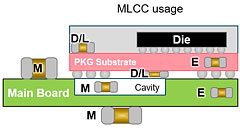
As MLCCs achieve package heights of 220 µm
they can mounted on IC substrates. At a
150-µm thickness they can be embedded
in substrates and pc boards. |

|
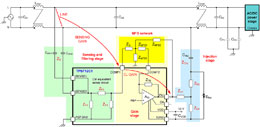
A multiple feedback technique improves
the AEF circuit’s immunity to CM
disturbances below 150 kHz while
preserving the filter attenuation
of emissions above 150 kHz. |
How Active EMI Filter ICs Reduce Common-Mode Emissions in Single- And Three-Phase Applications (Part 5): Improving Immunity To Low-Frequency Disturbances
by Timothy Hegarty, Texas Instruments, Phoenix, Ariz.
A compact design of the EMI filter is vital to meeting packaging specifications in high-density ac-dc applications, such as server-rack power supplies and onboard chargers for EVs. Fortunately, an active EMI filter (AEF) circuit for common-mode (CM) noise attenuation, through miniaturization of the toroidal-cored CM chokes in the equivalent passive filter, can considerably reduce the size, weight and cost of the overall power-circuit implementation. Previous parts of this series provided an overview of AEF techniques, discussed behavioral models to characterize the chokes and derived loop-gain expressions for a feedback-type voltage-sense current-inject AEF circuit. This new installment in the series addresses the problem of AEF amplifier saturation, which can result from low-frequency CM disturbances at the filter’s input port. Read the article…
|

Non-Inverting Integrators Are Not Really Integrators (Part 1)
by Gregory Mirsky, Design Engineer, Deer Park, Ill.
Integrators find use in a huge variety of electronic devices. Some of them use integrators to perform a mathematical operation of integrating analog signals. An example of such an application is a Rogowski current sensor where the output of the coil is a voltage proportional to the differentiated current in the bus. To restore the current waveform, an integrator is used. Many authors have presented non-inverting schemes for the integrator. However, these circuits produce erroneous results. Because of the non-inverting input, the transfer function of a non-inverting integrator obtains a zero at the pole frequency, thus destroying the integration function. In this article series, we’ll analyze various forms of inverting and non-inverting integrators to confirm this problem and then present examples that illustrate the differences in performance. Read the article…
|
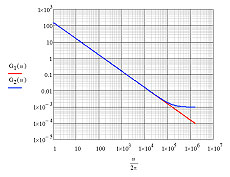
Part 1 analyzes the responses of
inverting integrators with and
without phase correction. |


FOCUS ON MAGNETICS 
Sponsored by Payton Planar Magnetics
A monthly column presenting information on power magnetics design, products, or related technology |
Optimized Magnetics Winding Design (Part 1): A Discovery Over Fifty Years Late
by Dennis Feucht, Innovatia Laboratories, Cayo, Belize
Dowell derived a 1D field solution for a pair of parallel plates conducting current, much like the layers of windings in a transformer. Magnetics textbooks routinely derive and explain it, and how it can be applied to magnetic component analysis, which is to say the calculation of winding resistance and therefore power losses for a given transformer design. Yet there is also an obvious way to apply it for magnetics design optimization, which minimizes winding resistance while applying constraints on certain winding parameters. The concepts presented in this new series may be familiar to those who have read my previous works on winding design such as references 1 and 2. However, the material is presented here in more of a tutorial format with further explanation of key points.
Read the article…
|

 |
 |

 |

|

 |

|

INDUSTRY EVENT
 |
|
PwrSoC Workshop Is Coming To Seoul In September
The International Workshop on Power Supply on Chip (PwrSoC) will be held this year from September 24-26 at Seoul National University in Seoul, Korea. PwrSoC is the world’s leading forum dedicated to the advancement of miniaturized and integrated power conversion and power management technologies. Held biennially, the workshop gathers experts from academia, industry, and the global supply chain to discuss current challenges and explore future opportunities in the field. Read the full story…
|


POWER PRODUCTS  |

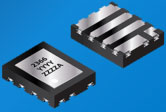
EPC’s EPC2366 GaN FET. |
40-V GaN Power Transistor And Lower Voltage Parts Target Silicon Strongholds
 Photo: The 40-V, 0.8-mΩ GaN FET offers an RON x QG figure of merit (10 mΩnC), which is best-in-class according to the vendor. The company has also announced plans to introduce 25-V and 15-V GaN devices. Photo: The 40-V, 0.8-mΩ GaN FET offers an RON x QG figure of merit (10 mΩnC), which is best-in-class according to the vendor. The company has also announced plans to introduce 25-V and 15-V GaN devices.
See the full story…
|


Infineon Technologies’ 750-V
and 1200-V CoolSiC JFETs. |
Company Adds SiC JFETs For Solid-State Power Distribution
 Photo: To enable the next generation of solid-state power distribution systems, Infineon is expanding its SiC portfolio with the introduction of the company’s first SiC JFETs. Photo: To enable the next generation of solid-state power distribution systems, Infineon is expanding its SiC portfolio with the introduction of the company’s first SiC JFETs.
See the full story…
|

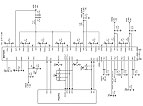
Microchip Technology’s MCP16701
power management IC. |
PMIC Powers High-Performance MPUs And FPGAs
 Photo: To address the rising power demands driven by AI, this device integrates eight parallel buck converters, four LDOs and a controller to drive external MOSFETs within an 8-mm x 8-mm VQFN package. Photo: To address the rising power demands driven by AI, this device integrates eight parallel buck converters, four LDOs and a controller to drive external MOSFETs within an 8-mm x 8-mm VQFN package.
See the full story…
|


Allegro MicroSystems’ ACS37035
and ACS37630 current sensors
and A89347 fan driver IC. |
Current Sensors And Fan Driver For E-Mobility And Industrial Automation
 Diagram: According to Allegro’s Ram Sathappan, the current sensors “provide industry-leading accuracy and noise immunity for precise motor control for demanding applications such as robots, industrial motors and electric vehicle traction inverters” while the “fan driver IC ensures quiet, reliable operation in seat- and battery-cooling applications.” Diagram: According to Allegro’s Ram Sathappan, the current sensors “provide industry-leading accuracy and noise immunity for precise motor control for demanding applications such as robots, industrial motors and electric vehicle traction inverters” while the “fan driver IC ensures quiet, reliable operation in seat- and battery-cooling applications.”
See the full story…
|

|


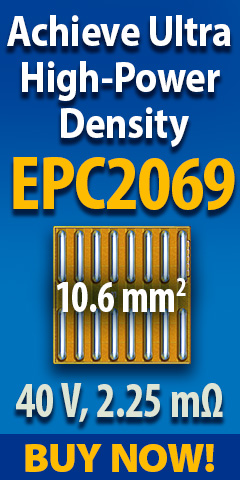


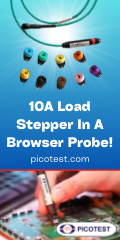
|

 |
 |

 |
 |

 |
 |

OTHER TOP POWER NEWS
|
|
 The Battery Safety Workshop will be held at UNC Charlotte, June 5-6. The Battery Safety Workshop will be held at UNC Charlotte, June 5-6.
 On April 30, Frenetic hosted a webinar by Bob White on how leakage inductance affects flyback converter performance and what you can do about it. On April 30, Frenetic hosted a webinar by Bob White on how leakage inductance affects flyback converter performance and what you can do about it.

|



 CISSOID’s inverter control modules (the ICM3S series) have achieved ISO26262 ASIL-C ready certification for functional safety. CISSOID’s inverter control modules (the ICM3S series) have achieved ISO26262 ASIL-C ready certification for functional safety.
 Boston-based Pure Lithium has received a $300 million letter of interest from the U.S.-Export-Import Bank to build a lithium metal battery manufacturing facility. Boston-based Pure Lithium has received a $300 million letter of interest from the U.S.-Export-Import Bank to build a lithium metal battery manufacturing facility.




 Infineon Technologies is providing its 600-V CoolMOS 8 superjunction MOSFETs to LITEON to enable superior efficiency and reliability in server applications. Infineon Technologies is providing its 600-V CoolMOS 8 superjunction MOSFETs to LITEON to enable superior efficiency and reliability in server applications.
 Navitas Semiconductor’s high-power GaNSafe ICs have achieved automotive qualification for both AEC-Q100 and AEC-Q101. Navitas Semiconductor’s high-power GaNSafe ICs have achieved automotive qualification for both AEC-Q100 and AEC-Q101.




ABOUT THIS NEWSLETTER: Thank you for reading HOW2POWER TODAY.
How2Power sends no more than one e-mail per month to registered users. Continuing your subscription ensures you'll receive future newsletters. Manage Your Subscription
©2020 All rights reserved. www.how2power.com
|
|